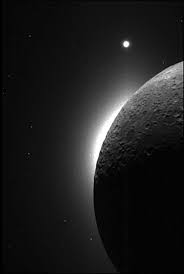Lunar Exosphere:

India’s Chandrayaan-2 lunar orbiter has made a path-breaking scientific observation – for the first time ever, it has detected the effects of the Sun’s Coronal Mass Ejection (CME) on the Moon’s exosphere. The findings were obtained using CHACE-2 (Chandra’s Atmospheric Composition Explorer-2), one of the principal scientific instruments onboard the orbiter.
- The Moon’s atmosphere is extremely thin and classified as an exosphere, where gas atoms and molecules rarely collide. Its surface forms the lower boundary of this exosphere.
- The lunar exosphere contains gases such as helium, argon, and neon, with traces from radioactive decay, solar wind, and meteoroid impacts.
- Due to its low density, it cannot retain heat, causing extreme temperature variations.
- This fragile atmosphere is produced by several processes, including:
- Interaction with solar radiation and solar wind (ions of hydrogen, helium, and heavier elements).
- Meteorite impacts that release atoms and molecules from the lunar surface.
- A Coronal Mass Ejection (CME) is a massive, violent expulsion of plasma (a superheated gas of protons and electrons) and magnetic fields from the Sun’s outer atmosphere, the corona, that erupts outward into the solar system.
- It is one of the largest forms of solar activity and a major driver of space weather.




